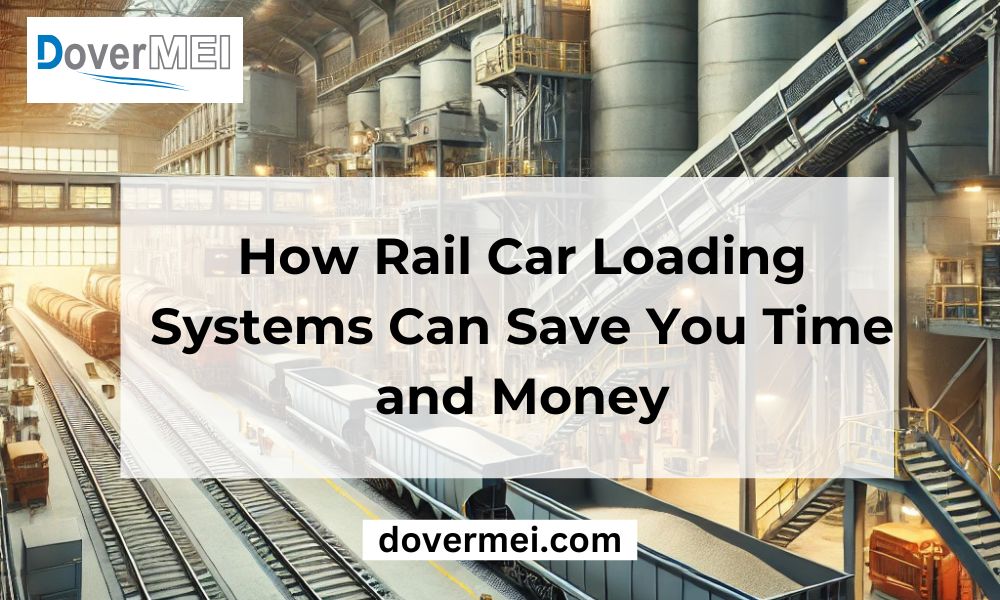Efficiency in bulk material transport is crucial for industries such as agriculture, mining, and petrochemicals. However, traditional rail car loading methods are often slow, labor-intensive, and prone to inefficiencies. Companies looking to enhance productivity and reduce costs are turning to advanced rail car loading systems. These systems not only accelerate the loading process but also minimize waste, optimize labor, and improve overall supply chain efficiency.
The Fundamentals of Rail Car Loading Systems
Rail car loading systems are specialized solutions designed to facilitate the quick and precise loading of bulk materials into railcars. These systems comprise various components, including hoppers, conveyors, pneumatic loaders, and automated control units. Depending on the industry and material being transported, different loading systems are employed:
- Gravity Loading: Uses gravity-fed chutes for fast bulk transfer.
- Pneumatic Loading: Ideal for fine powders and granules, utilizing air pressure.
- Mechanical Loading: Employs belts, screw conveyors, or bucket elevators for heavier loads.
Industries such as cement manufacturing, grain storage, and chemical processing greatly benefit from these systems, ensuring efficient material movement without excessive manual intervention.
Reducing Loading Time with Automation
One of the most significant advantages of modern rail car loading systems is automation. These systems reduce the need for manual adjustments, streamlining operations and significantly cutting down loading times. In industries where time-sensitive logistics are critical, automated systems ensure that railcars are loaded within minutes rather than hours.
For example, in the agricultural sector, automated grain loaders can process hundreds of tons per hour, drastically reducing downtime at rail yards. Similarly, in chemical plants, precise automated control systems prevent material flow inconsistencies, ensuring a steady, uninterrupted transfer.
Enhancing Accuracy and Reducing Material Loss
Traditional loading methods often result in spillage, inaccurate weight distribution, and product loss. Advanced loading systems integrate precision weighing mechanisms, laser-guided filling, and sensor-driven shutoffs to prevent overfills and underfills.
By maintaining accurate load limits, businesses avoid penalties associated with exceeding regulatory weight restrictions. Furthermore, reducing material loss translates into direct cost savings, as every kilogram of product is accounted for and utilized efficiently.
Lowering Labor Costs and Improving Workplace Safety
Manual rail car loading requires a substantial workforce, leading to higher labor costs and increased risks of workplace injuries. Automated loading systems minimize the need for human intervention, significantly reducing these expenses.
With fewer workers required in hazardous areas, the likelihood of accidents such as falls, exposure to harmful substances, or equipment-related injuries diminishes. Additionally, modern loading solutions ensure compliance with OSHA and other regulatory standards, providing safer work environments.
Optimizing Supply Chain Efficiency
A streamlined rail car loading system does more than just load materials quickly; it enhances the entire supply chain by synchronizing with logistics operations. By reducing congestion at loading stations, these systems prevent costly delays and improve overall throughput.
Efficient rail car utilization means companies can dispatch more shipments in less time, ensuring that customers receive goods faster. This level of optimization strengthens relationships with buyers and enhances a company’s reputation for reliability.
Energy Efficiency and Environmental Benefits
Sustainability is a growing concern for many industries, and rail car loading systems contribute to reducing environmental impact. By optimizing load distribution and reducing redundant movements, companies can lower fuel consumption and carbon emissions.
For instance, automated loading reduces the need for diesel-powered equipment, cutting down on fuel costs and air pollution. Additionally, spill-free loading methods minimize waste, ensuring that fewer raw materials are lost, further enhancing environmental responsibility.
Long-Term Cost Savings and ROI
Although implementing an advanced rail car loading system requires an initial investment, the long-term cost savings are substantial. Reduced labor costs, minimized product loss, and increased operational efficiency all contribute to a rapid return on investment (ROI).
Many companies report ROI within a few years, as improved logistics translate into higher profits. Maintenance costs are also significantly lower, as modern systems are designed for durability and require minimal upkeep.
Conclusion
Rail car loading systems have revolutionized bulk material transportation by delivering speed, accuracy, safety, and sustainability. Companies that invest in these advanced systems benefit from reduced operational costs, increased efficiency, and a significant competitive edge.
As industries continue to seek cost-effective and time-efficient solutions, the adoption of automated rail car loading systems will only grow. Businesses looking to optimize their material handling operations should consider implementing these cutting-edge technologies to unlock long-term savings and unparalleled efficiency.
